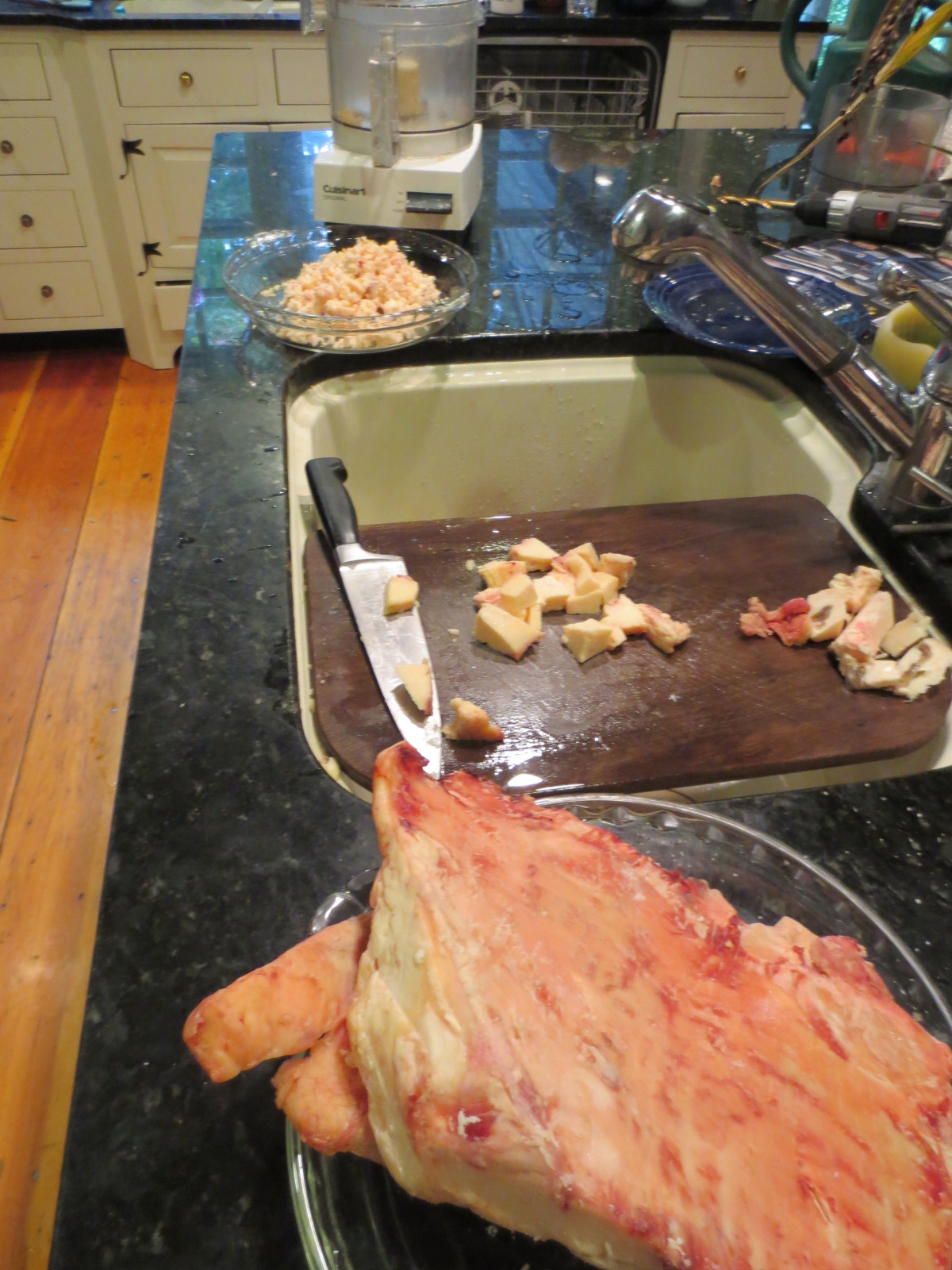In an effort to use as much of our butchered beef as possble, I requested that the butcher set aside non-meaty fat for rendering tallow. I asked especially for the high quality leaf fat,the fat that lines the abdominal cavity and encloses the kidneys. In order to melt evenly and efficiently, it is necessary to chop the fat into small pieces. I cubed the almost frozen fat and then pulsed it in the food processor. The slippery hilt of my knife became difficult to work with so I wore an oven mitt for better control and comfort. This year I melted the fat in a low oven in roasting pans, stirring occasionally. I found the oven method less messy than rendering on the stove and more efficient because the roasting pans held more pulverized fat.When the fatty bits firmed up and no more liquid fat was accumulating in the bottom of the roaster,I ladled the liquid through a cheesecloth lined colander into a bowl.While still warm, I transferred the rendered fat into clean canning jars. I hope that storing the tallow in jars, rather than one or two larger containers will allow me to access it conveniently. When making soap I can preliminarily weigh it and heat only as much tallow as required. A quart of tallow in the refrigerator might remind me to search out delicious recipes using beef tallow.I stored the tallow in the freezer after cooling. It was particularly fitting that I cleaned the greasy kitchen with the tallow based soap I made last year.





